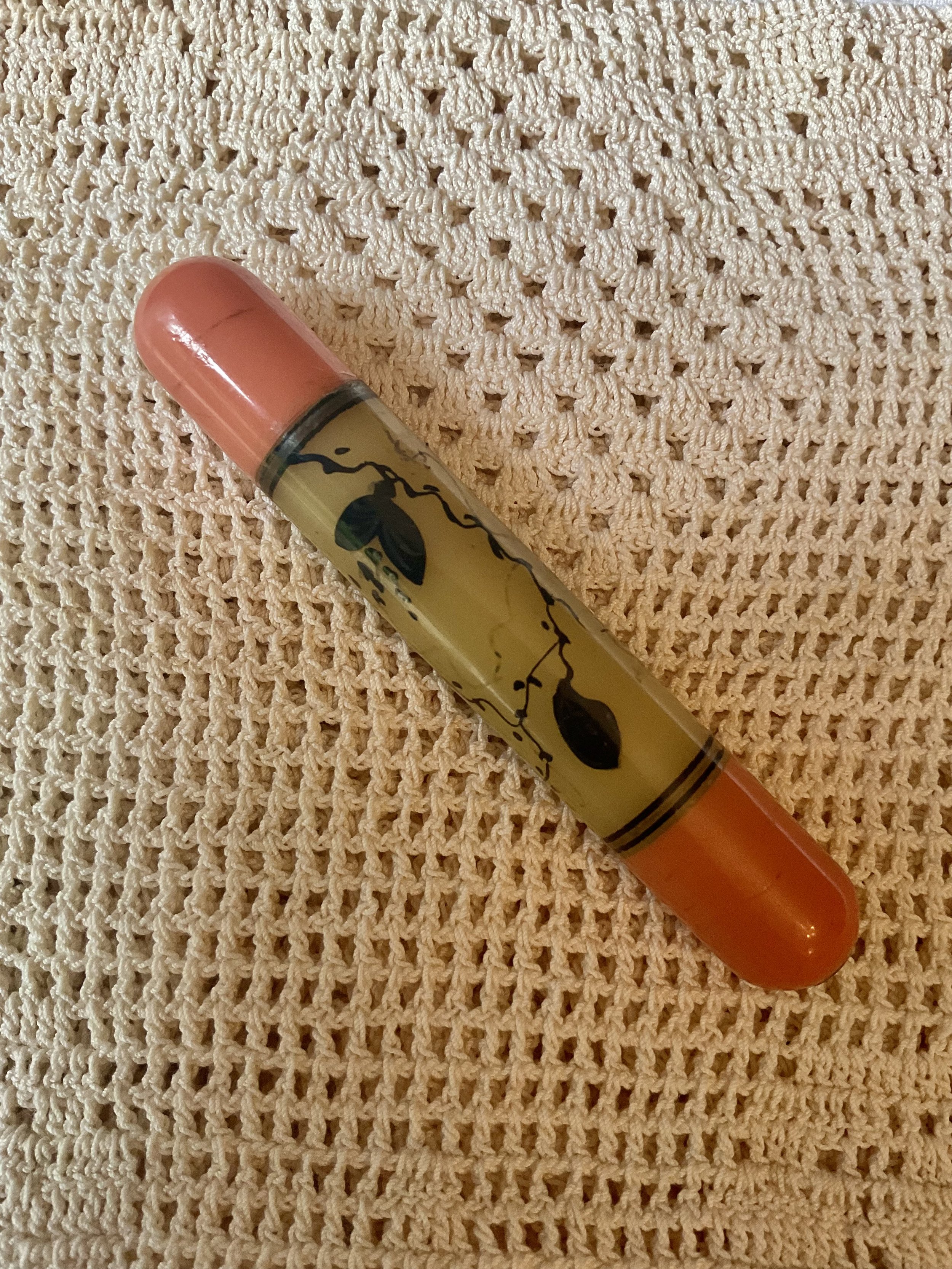 Image 1 of 10
Image 1 of 10

 Image 2 of 10
Image 2 of 10

 Image 3 of 10
Image 3 of 10

 Image 4 of 10
Image 4 of 10

 Image 5 of 10
Image 5 of 10

 Image 6 of 10
Image 6 of 10

 Image 7 of 10
Image 7 of 10

 Image 8 of 10
Image 8 of 10

 Image 9 of 10
Image 9 of 10

 Image 10 of 10
Image 10 of 10











Antique Faience Trinket Box
This delightful French antique trinket box has been tin glazed. It has been hand painted featuring a scene depicting ancient ruins on the domed lid. The sides have been decorated with a floral design. It is edged with metal around the upper rims and it has a dainty little clip at the front. This faience box is very old and quite delicate.
Faience is the French term used to describe tin glazed earthenware. It was predominant in the late 16th century through to the 18th century. For hundreds of years, Europeans had been searching for the secret that would lead to the production of porcelain. Chinese porcelain had been discovered in the Tang Dynasty (618 – 917). The European quest to obtain a white shining product led to the production of faience. Artisans created pieces on a potter’s wheel, a mould or by hand. It was then covered with a vitreous glaze and lead oxide which made it impermeable. The addition of the tin oxide made the glaze become opaque white. Decoration was then painted onto this. Faience was first introduced to Lyon by Italian immigrants in the late 16th century. To determine if a ceramic object is faience, look for a chip. If the ceramic within is brown, then it is faience.
This lovely old piece of faience has a crack inside on the bottom right hand corner. The lid is also loose on one side. If you are after a shiny new trinket box in excellent condition, then this is not for you. Rather, this is an opportunity to become custodian of a faience piece of history. It measures 8.5 cms by 6.5 cms. It is approximately 5 cms in height.
This delightful French antique trinket box has been tin glazed. It has been hand painted featuring a scene depicting ancient ruins on the domed lid. The sides have been decorated with a floral design. It is edged with metal around the upper rims and it has a dainty little clip at the front. This faience box is very old and quite delicate.
Faience is the French term used to describe tin glazed earthenware. It was predominant in the late 16th century through to the 18th century. For hundreds of years, Europeans had been searching for the secret that would lead to the production of porcelain. Chinese porcelain had been discovered in the Tang Dynasty (618 – 917). The European quest to obtain a white shining product led to the production of faience. Artisans created pieces on a potter’s wheel, a mould or by hand. It was then covered with a vitreous glaze and lead oxide which made it impermeable. The addition of the tin oxide made the glaze become opaque white. Decoration was then painted onto this. Faience was first introduced to Lyon by Italian immigrants in the late 16th century. To determine if a ceramic object is faience, look for a chip. If the ceramic within is brown, then it is faience.
This lovely old piece of faience has a crack inside on the bottom right hand corner. The lid is also loose on one side. If you are after a shiny new trinket box in excellent condition, then this is not for you. Rather, this is an opportunity to become custodian of a faience piece of history. It measures 8.5 cms by 6.5 cms. It is approximately 5 cms in height.




































